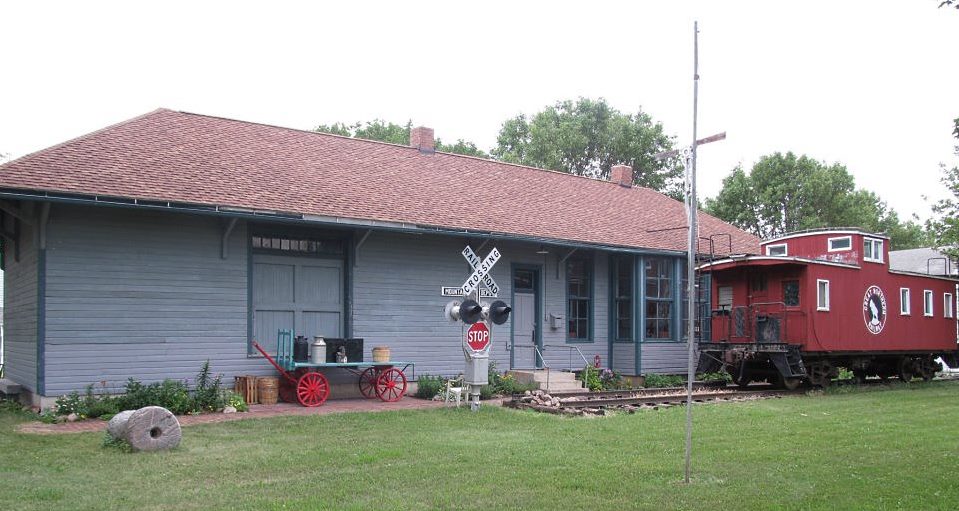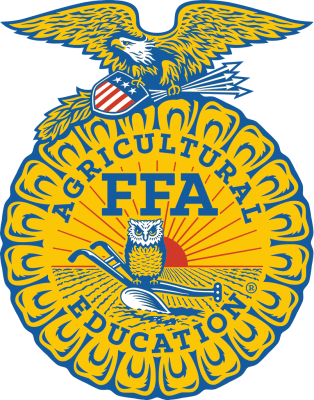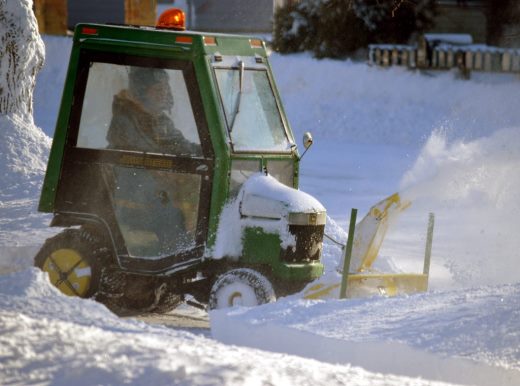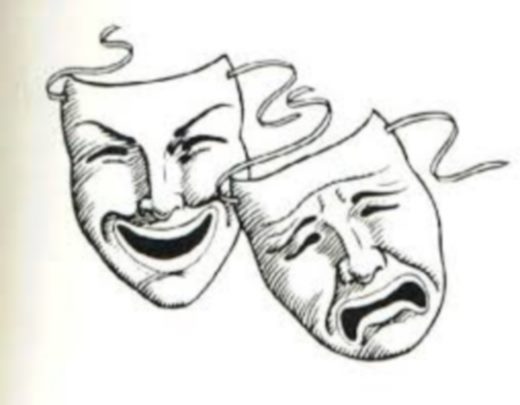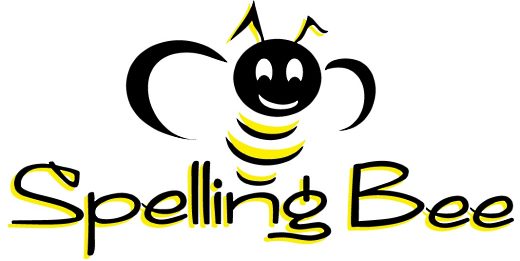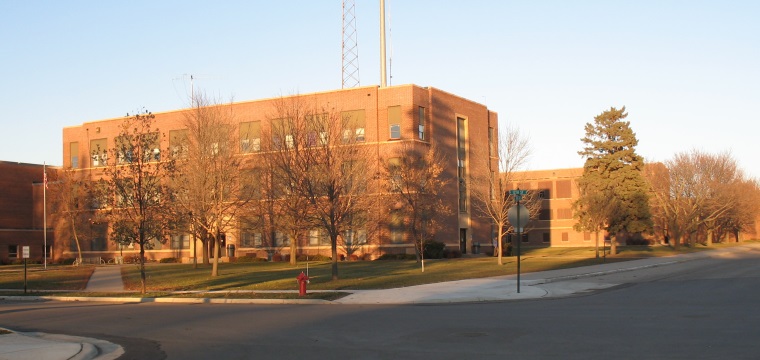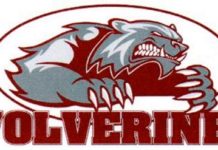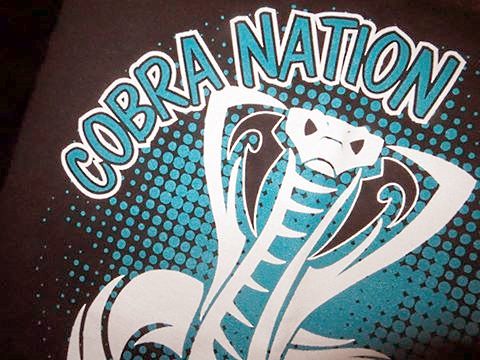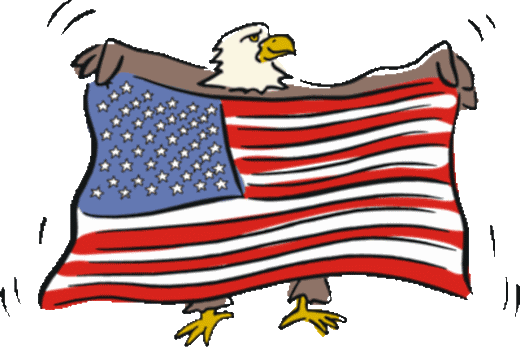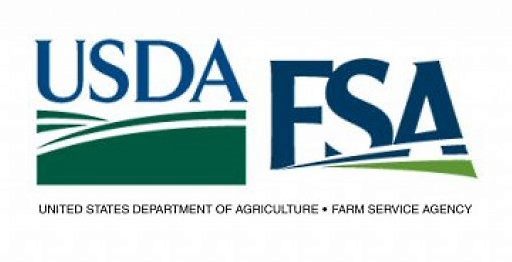All in for ‘Allis’ during 51st year of tractors and friends
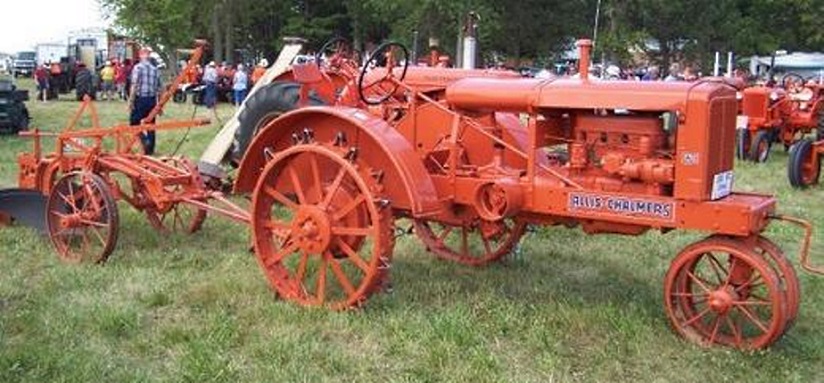
In 1967, the Butterfield Steam & Gas Engine Show made its debut at Voss Park. That first year, the Bee was just a one-day event. Members of that first Butterfield Threshermen’s Board included Wayne Kispert, president; Frank Harder, secretary; John Ekstrom, treasurer; along with Wayne R. “Bink” Hanson, Ed Streich, Otto Wolner, Art Ommodt and John Pankratz.
That first show was a tremendous success as attendance, with an estimated 15,000 people on hand. Voss Park has hosted the Bee every year since then. The non-profit event was changed to a two-day event in 1968. It is coordinated by dozens of volunteers each year and has grown beyond the threshing by leaps-and-bounds.
This year, the 51st-annual edition is set to take place, beginning on Friday afternoon, August 18 and continuing through Saturday, August 19 and Sunday, August 20.
In 2017, the Bee will be all in with “Allis.” Allis Chalmers will be the featured tractor, proudly emblazoned on the Bee button. Admission is with a Bee button; $10 for adults (ages 13 and up) and free for children under age 12.
Today’s nine-member Butterfield Threshermen’s Association Board include President Howard Madson, Vice-President Doyle Janzen and Directors Dave Buhler, Mike Hall, Bruce Koenig, David Harder, Jim Lepp, Steve Ringen and Jim Nasman.
And – oh yes – the wheat and oats are ready. Belt up the steamers – it’s threshing time!
(Here is a link to a post containing Butterfield, Bee history in photos: https://www.cross-countiesconnect.com/2017/08/the-way-many-remember-butterfield-the-bee/)
Threshing Bee featured events
+ Tractor Pull – The Friday night Tractor Pull starts at 5:30 p.m. Registration runs from 4 p.m. to 5:15 p.m.

+ Threshing – Demonstrations of threshing using the old-time machinery on both Saturday and Sunday. The wheat and oats used in the threshing process are grown on the 12-acre plot on the south side of Voss Park. The Lepp family will have their 22″ McCormick-Deering machine on hand to help out with the threshing. The Butterfield Threshermen’s Association’s Case steamer will also be in service. Two noteworthy double-winged threshing machines will also be on hand – a 32″ Minneapolis and a 36″ Minneapolis. In addition, a rare 1914 Wood Brothers 40″ machine will also be featured. Other displays will be a 1914 Sterling Thresher and two Belle City models.
+ Plowing – Ten acres of ground has been set aside for plowing demonstrations. An eight-bottom John Deere plow, donated to the Bee in its early days, is hooked up to the “steamers,” along with small tractors, horses and, possibly, mules, for various demonstrations. Tractor plowing will be held on Saturday and Sunday mornings, with horse plowing and other demonstrations held during the two afternoons.
+ Steam Tractors – The steam engine is most likely the single piece of machinery that best represents the nostalgia of early farming on the prairie. There are five at the Bee, hissing and chugging under load as they belt up to the threshing machines – and also the saw mill. Steam engines provided the first portable power for real “muscle” jobs like threshing, plowing, sawing, logging and building roads. The bigger the machine – the more powerful. From the late 1800s on into the 1920s, these powerful giants were the workhorses. At the Bee, the 65-horsepower Case steam engine that was the focus of that first 1967 show can be seen. There is also a 24-horsepower Minneapolis that features a distinctive red water tender that forms a huge hood ornament. A 1913 40-horsepower Case steam engine was added to the show in 2006.
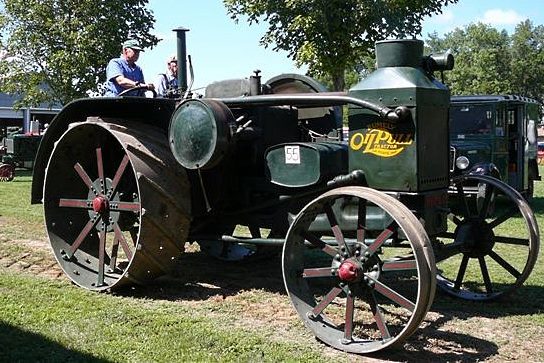
+ Gas Tractors – Gas tractors eventually put horses out of business on the family farm. Two of the largest on display are the huge E-Rumely and the 35-70 Minneapolis, both of which were used in day-to-day farming life decades ago. The oldest tractor in the collection is a 1908 International. You’ll see John Deere, Allis Chalmers, Fordson, Case, International, Farmall, Avery, Waterloo Boy Titan, Aultman-Taylor and Hart Parr of all shapes and sizes.
+ Wood Cutting – Back when the settlers came to southwestern Minnesota, woods was a vital resource. There are several antique machines that can turn a log into many different things. Some wood-cutting machines could run with a gas engine and did not require a tractor for power. Both are on display at the Bee. Steam and gas tractors will belt up to the saw mill housed in its own shed where logs are turned into usable lumber. There is also a machine that makes veneer for egg crates, lathes, shingles and firewood. Antique drag saws, the forerunner to the chain saw, cuts logs as well.
+ Steam Power House – In the Steam Power House there are stationary versions of the mobile steam traction engines on the Voss Park grounds. Inside is the Vilter Corliss – the largest in the house. The 1901 engine came from the Hauenstein Brewery in New Ulm where it used to run the brewery’s refrigeration system. There is also a six-ton American Ball engine with generator. Other engines of interest include the Creamery Package Company engine from Mankato, the single-acting twin cylinder marine engine that runs a small boat and a Fairbanks Morse engine with a 3 x 4 bore and stroke with comes from the 1880s and was used by a coal stoker. There are 12 engines in the Power House which run off a boiler located at the back of the building. Also in the collection are a Bownell with an 8 x 10 bore and stroke and a 9 x 12 Porter which was used at Carleton College in Northfield. The Steam Power House also boasts whistles on the roof that can make quite a chorus when they go off.
+ Gas Engines – Dozens of gas-powered engines are on display under the Voss Park trees, restored by their owners. Gas engines were not only used in the field and barns, but also in the farmhouse. They were used for tasks like laundry, shucking corn and helping grind the grain into feed for the livestock. One of the models is a Hart Parr which has the unique feature of running upside down.
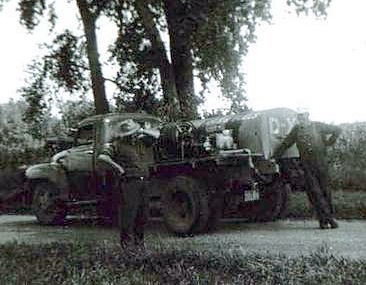
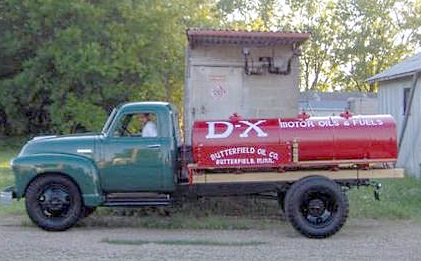
+ Antique Cars and Trucks – Hundreds of antique vehicles are also display in their own building, featuring this year the above fuel truck.
+ Tractors of Ed Lammers and Art Ommodt – Tractors donated from the collections of the two men are displayed in their own shed.
+ Scales and Miniatures – There are many different smaller versions of threshers and tractors also on display.
+ Tractor Parade – The Tractor (and Antique Vehicle) Parade is held at 2:15 p.m. on Saturday and Sunday afternoon.
Surrounding the threshing are the buildings of Pioneer Town
+ Many of the buildings lining the “main roads” of Pioneer Town at Voss Park have local historical significance and are filled with genuine artifacts from the area’s pioneer past; a time when the land was untamed and the promise of new life in a new country piqued the hearts of European immigrants.
+ Log Cabin – The Log Cabin was brought to Voss Park in 1988 from the Nibbe farm. It was originally built around 1875 by Lars Hanson and was discovered by Arnold and Thea Carlson in 1932 when they were doing some remodeling and found the cabin walls under the siding. The cabin includes the main floor – which made up the kitchen, living room, dining room and parents’ bedroom. There is also a loft that would be the bedroom for the children. Outside the Cabin is a corral that was built by Bruce Koenig, which is used to hold two Morgan horses during the show. During the Bee, you will find Robin Koenig busy over the fireplace making meals for her family.
+ Children’s Barnyard – A favorite place for the youngest Bee visitors to visit is the Children’s Barnyard, which premiered in 1979. Children love the animals; and many can be held in their laps. In addition to the cats and dogs, there usually are geese, and perhaps some goats on hand. There is often a new calf to delight the young ones. The hay bales give the visitors a chance to sit down and watch the antics of the animals or hold a wriggling puppy.
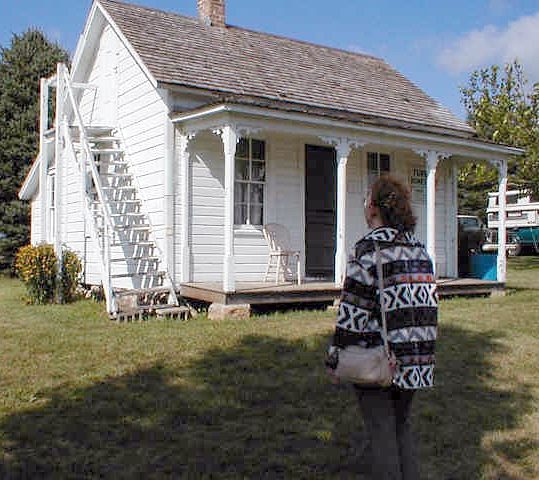
+ Tuberg Homestead – The Tuberg Homestead is more than 130 years old and has been on display at Voss Park since 1974. Andrew Tuberg – who was born Andrew Johnson in 1849 – came to American from Sweden when he was 20-years-old. When he arrived in this area, he found out there were already six Andrew Johnsons. Since he didn’t care to be the seventh, he changed his name legally to Tuberg. Tuberg caught a train in New York City and headed west until he got to St. Peter. From there he walked all the way to Jackson. He wanted to buy some land in Watonwan County, where he had heard the soil was rich. He chose Butterfield and brought his Swedish bride there to live. This house was home to a family of five children. Seven children were actually born to the Tubergs, but two died in infancy. The children reached the second-floor bedroom by climbing up the stairs on the outside. One of the things Tuberg’s education helped him do was build a mill which could grind the grain grown in the area. A replica of that mill is close by. Tuberg also had tools to make coffins. With the lack of some of the medical supplies now available, this skill came into use quite often. Notice the absence of closets. The pioneers didn’t have as many clothes as we do today. Normally they hung what few they had on nails or a peg. You’ll even see a few samples of the kinds of clothes they might have worn. You’ll see an Edison phonograph which provided the family with music. You’ll also see a watch fob of human hair, an old crazy quilt on the sofa, a cream separator – plus a Battenberg lace tablecloth. The old silverware came from Sweden.
+ Tuberg Mill – The Tuberg Mill was erected in Voss Park in 1976, but it wasn’t ready for use until the following year. Millstones had to come from West Virginia to make the mill operational. In earlier years, the original Tuberg Mill stood about five miles southeast of Butterfield. It served the community from 1877 to 1905. This replica of the Tuberg Mill has a 12-foot base and goes up about 20 feet. The handmade wooden gears make use of the wind if there is any. The mill has 5 1/2 foot wooden gears in the headhouse and contains 61 teeth which are meshed to a smaller 18-inch gear driving a shaft down to the millstone. Andrew Tuberg built the original mill. His homestead stood just northwest of the mill. The Kasota quarry provided the original millstones. Castings made in 1877 came from the Meyers Brothers foundry in Mankato from specifications which Tuberg gave them. This Dutch style windmill had a wingspan of 36 feet.
+ Flour Bin – The Flour Bin provides visitors with the opportunity to buy flour that is ground right on the premises. The Tuberg Mill, which originally was powered by wind, now receives its power from electricity. The Mill grinds a variety of organic grain flours, including whole wheat, rye, buckwheat and cornmeal. A crew of volunteers bag and sell the flour during the Bee. Visitors can purchase 20 lb., 10 lb., 4 1/2 lb., or 1 1/2 lb., bags of flour. Most of the grain gets ground in advance, but some is ground right at the Bee. There are recipe books for sale, as well as some free food samples made from the recipes using the flour. Miniature sacks of flour are also sold, which makes a fine souvenir from the Steam and Gas Engine Show.
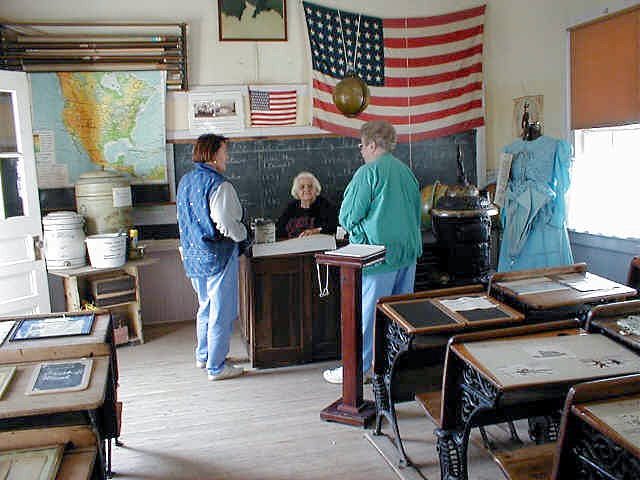
+ District #12 School – Many visitors make their way into the District #12 school house. For older visitors, it may remind them of when they went to school during the one-room schoolhouse era. You’ll find former teachers, school board members and students taking their turn at hosing the school. This school is originally from the Odin area. Eight grades were taught within its four walls. Before the school was built, the Odin children attended makeshift schools in homes. Located two miles east of Odin, the school was built in 1879. It was moved onto a gravel road one-half mile east and one-fourth mile north. In those days, students generally walked to school no matter what kind of weather. The last year that students attended this school was in 1968. In the nearly 90 years the school was in session there were 65 different teachers. The site on which the school was built was bought from Ole Wolner, who was paid $30 for the tract of land. Not long after, the school was moved to a new site by a team of horses. The cost of the original school was $100 plus another $179.15 to help pay for such things as the chairs, books, desks and other items needed. Kerosene lamps brought light into the school before electricity, which arrived later in 1944. Getting electricity had been approved earlier, but because of the ware, it wasn’t installed until 1944. The first teacher was paid $24 a month. They used the New Testament for their devotions. Receiving report cards every six weeks came later in the school year. Since children spoke Norwegian at home, they had to learn English at school. Because students had to help with farm work, ages varied from about six up to 23 years of age. In 1899, five students were older than age 18. The first teacher with a certificate was hired in 1910. Notice the early school books that they used along with the souvenir pamphlets given to students by the teacher at the end of the year. Also notice the maps on the wall. The water bucket which you see in front of the building. The school bell, an integral part of every pioneer school. On the wall you’ll see a picture of the first president of the United States, George Washington.
+ Walt’s Barbershop – Walter Bedford bought out John Kob and started Walt’s Barbershop in Butterfield in 1934. He continued at the same location until his retirement in 1984. Walt was a native of Sherburn and worked for a time in Mountain Lake. He met his wife, Barbara Helvig of Butterfield, at a Mountain Lake Pow Wow and the two were married in 1929. The Butterfield Threshermen’s Association constructed the building next to the General Store and Walt and his family installed the equipment that he used during his 50 years of barbering in Butterfield. People will enjoy checking out his barbershop to see what kind of tools he used. He died in 1993. At times you’ll find some of his children serving as hosts in the building.
+ General Store – At the General Store, the shelves – which run from floor-to-ceiling – as well as the counters, are filled with merchandise from the past. Papers and books on display include an 1858 Harper’s Weekly. A 1917 issue of the Butterfield Advocate is there, too. How about some kettle-rendered lard? Or if you are getting ready to do the laundry, don’t forget your Linnet starch. If you want your new straw bonnet to look right up to style, renew it with some Colorite. The store is full of all kinds of 19th century merchandise.
+ Hollenitsch Drug Store – The Hollenitsch Family opened a drug store in Butterfield at the turn of the century. Think of the Drug Store and you think of ice cream cones – vanilla, of course. You can buy yours for 50 cents through the north window during the days of the Bee. About 4,000 cones are sold every year during the Bee. While you’re in the Hollenitsch Drug Store (linked to the General Store) be sure to notice where the prescriptions were taken. It made it handy for the local doctor to have a drug store in town. You’ll find all sorts of things, such as the new Bobbi rollers for your hair, or even the Lady Merwin Wave clips. Take a look at the California Perfume Balls or the Fitch’s talcum powder. Got a scalp problem? How about some Radelle Scalp Freshener. There is also a collection of pipe tobacco and fancy cigars.
+ Pete’s Harness Shop – In the days when the horse was key to the life of a farmer; Pete’s Harness Shop did good business. You could get bridles, saddles, bits, cowboy hats and other items you needed for your horse or rider. No one could miss his shop since at that ime it was right on the main intersection across the street from the bank. In 1983, the BTA brought his equipment to display for visitors at the Bee. The building is a recreation of the original. The harness business declined after the advent of the automobile. People began using horses for leisure activities only.
+ Pioneer Church – The Pioneer Church has made its home in Voss Park since 1970. Built in 1900, it was formerly the First Presbyterian Church in Butterfield. It closed in 1969 when a replacement pastor could not be found. Notice old hymn books in the hymn racks that the congregation used years ago.
+ Mennonite House – Built in 1871, the Mennonite House is a beautifully preserved museum of the domestic life of 19th century Mennonite immigrants. The original owner of the house was Aron Peters. He and his family immigrated to America in 1865. He bought this home in 1880. Many Mennonites came to America in the 1870s and 1880s. In 1973, the house was moved to Voss Park. Mennonite pioneers would often have a Summer Kitchen for cooking so that the house would stay cool. You can find the Summer Kitchen right outside the north door of the kitchen. Inside the house, you’ll see the baskets used to gather eggs, some for storing, some sewing baskets, and also baskets to gather grapes. The downstairs area has only three rooms. You’ll find old fashioned items in the kitchen and the living room that may remind you how your grandparents furnished their houses. The upper level is not open to visitors. Not many sleep on straw mattresses, but the pioneers did. Plumbing was one thing the house did not have, so at night they often used the chamber pot, usually located under the bed. When bath time came on Saturday, the reservoir on the stove in the kitchen provided hot water for baths.
+ Summer Kitchen – Early settlers kept their homes cool in the summer by doing all cooking and baking in the “Summer Kitchen” – a separate room off the main house with open windows to let on cooler air. The Mennonite House Summer Kitchen is just a few steps away from the back door of the house. The sweet aroma of fresh-baked bread drifts on the breeze when you visit the Summer Kitchen. The ladies make several loaves in the morning and another batch in the afternoon. The flour they use comes freshly ground from the Tuberg Mill. They also dabble in such baked delicacies as schnetke and sweet rolls. The oven in the Summer Kitchen is made of brick. Pioneer women used such things as corn cobs and prairie grass for fuel. During the Bee, Summer Kitchen volunteers use cobs. Heating the oven takes about a bushel and a third of cobs. You can buy a recipe book which tells how to make some of these goodies in your own kitchen and it also details some of the customs of the pioneer culture.
+ Blacksmith Shop – One of the traditional “hot spots” at the Threshing Bee is the Blacksmith Shop. Among other things worked on in the Shop are miniature horseshoes, which you can buy for a dollar each. Long ago, the Blacksmith was a big help to the farmer who might need to have him shoe a horse, sharpen his plow shares or make repairs to one of his machines. Take a good look at the steam-driven trip hammer. Two machines also on display are an antique welder and steam press.
+ Broom-making – Broom straw. boom handles and twine are used to make the various kinds of brooms. Broom straw is not produced locally, so it has to be imported. Money made by the Broom Factory goes into the BTA coffers. Check the display on the wall to give yourself some idea of the brooms being prepared during the Bee. Even the colors are not all the same. Choose from an RV broom, a fantail our double fantail, a short fireplace broom, a corn husk mop, whisk broom – or just an ordinary broom. The first step in making a broom is attaching the broom straw to the handle using wire. A vise holds the unfinished broom while the stitching is done. Broom-makers operate this machine by using a foot pedal, which leaves their hands free to guide the broom. The last step is trimming the straw to the proper length. There are also unique pencil brooms being created.
+ Copying Lathe – If you don’t mind the noise, the copying lathe offers a rare view into early mechanized woodworking. The machine can produce such items as spindles, duck decoys, rolling pins, bowling pins and baseball bats. The Butterfield Threshermen’s Association (BTA) discovered this machine at Osakis in someone’s back yard. As rusty as it was, they brought it back and were able to get the machine back into working condition. The lathe has been at home in Voss Park since 1981. There is also a spindle mill on hand that is used to make table legs.
+ Advocate Print Shop – When you enter the Advocate Print Shop, you will step back in time to a period when type was set by hand to put out the village newspaper. The Chandler and Price press was used to print the type onto paper back when the Advocate office was a door or two down from the main intersection in Butterfield. Merging of the Mountain Lake Observer and the Butterfield Advocate came about in 1974. They had been separate papers from 1896 until then. The Intertype is a fascinating array of 10,000 moving parts that operate in precision to set type from a keyboard. The first model of the Linotype was invented by Ottmar Merganthaler in Baltimore in the 1880s, revolutionizing the printing industry.
+ Granada Depot – Want to ride on a miniature train around the northern rim of Voss Park? You can have your opportunity at the Granada Depot. Young and old alike can ride a miniature train that boards at the Depot. The Depot, which came originally from Granada, Minnesota, arrived at Voss Park in 1977. Granada, located about 25 miles southeast of Butterfield, was on the Milwaukee line. The Chicago-Northwestern served Butterfield for many years. On the wall inside the Depot is a plaque commemorating Bob Casey, a longtime depot agent for Butterfield. Casey was instrumental in teaching Butterfield young people about telegraphy.
+ Threshing Bee Train – Be sure to have your ticket available when the trainmaster comes around. The engine for the train is a Chicago & Northwestern switch engine.
+ Slaalien Livery Barn – During the weekend of the Bee, the barn is home to the Peterson equine. The Livery Barn gets it name from Hans Slaalien, a Norwegian pioneer who immigrated to America in 1882 at the age of 20. The Voss Park livery barn is a copy of Slaalien’s historic barn, built in 1983 by a group of volunteers using a photograph of the original. Members of the Slaalien family, who were still alive at that time, were delighted with the result. Slaalien loved horses and he loved his new home – America. His bride came to America from Norway in 1891. They were married the same day she arrived, and the couple settled south of Butterfield. The Slaaliens had 13 children, one of whom died in infancy. There were 10 girls and three boys. Slaalien not only built the Livery Barn, but also a house for his family. Slaalien rented sleighs, cutters and a carriage and he charged 15 cents to bring passengers from the train depot to the center of town. He would also pick up freight at the train station and bring it back to the Livery Barn for customers to pick up. He also cared for teams of horses while the owners conducted business or did some shopping. He did very well until the arrival of the automobile. Little-by-little he sold his horses until he had only two left – Fritz and Sam. He drove a taxi for awhile and also had a cafe where his family served meals to customers. His daughters served the customers while his wife did the cooking. For a time he was the town marshal. Slaalien died during a snowstorm in 1929. How fitting that his body was taken to the cemetery by horse and wagon because of the drifted conditions. He would have appreciated that.
Displays to see
+ Lefse – At the west end of Voss Park, under the ash grove trees, is the lefse booth – a Bee tradition. This Norwegian treat is made fresh over the weekend and samples are sold to Bee guest. Lefse is a type of thin bread, like a crepe, that is most often served with butter and sprinkled sugar. It is grilled on a special pan turned with a flat stick.
+ Rope-Making – Next to the lefse booth is the rope-making demonstration. The twin comes in an assortment of colors and is strung from a rope maker that consists of a lever and gears, to a small hand tool with four notches which is held by one of the workers.
+ Engine House No. 1 (a part of the Voss Park display area since 1969) – Inside the Engine House can be found handmade whistles (made of wood, vegetables, corn cobs, Pipestone red rock, plastic and wood and plastic combined), wood carving (displays of carved decoys, Santas, birds, small shoes and boots made of basswood as well as a turning lathe used to create a small variety of ballpoint pens from exotic woods), handmade stained glass, woodworking (scroll saw art, fret work and intarsia), rosemaling (demonstrations of Norwegian rosemaling, Swedish dala and German bauernmaleri – art forms about 200-years-old), spinning of wool spun on a drum carder to comb the washed woo then spun into yarn, candlemaking (hand-dip your own 5 1/2 inch taper candle), a Norwegian garden cultivator (includes a headlight, rear view mirror, crank, distributor, all kinds of gauges and whistles, training wheels, a four-cycle engine and much more), toy machinery, corn husk dolls (doll-making learned by settlers from the Seneca Native Americans), rug-making including a loom, quilting with a treadle sewing machine and quilting frame, chair caning and seat weaving. The Bee bookstore in the Engine House has for purchase pictorial histories on things seen at the Bee.
Food at the Bee
+ Butterfield Lions Club – Mini-doughnuts, cheese curds and nacho chips, along with pop and water.
+ Butterfield Community Club Auxiliary – Barbecues, hot dogs (with or without sauerkraut), taco salad, walking tacos, potato salad, baked beans and build-you-own baked potatoes.
+ Watonwan County Historical Society – roast beef commercial meal, rotisserie-roasted hot dog and/or meal, steam-engined cooked local sweet corn on the cob w/melted butter, potato chips, fresh-baked Bakers’ Square pies, vanilla ice cream cup, fresh-baked cinnamon roll, assorted bread loaves (blueberry, French toast and banana/chocolate chip), freeze pop, white/chocolate milk, coffee with FREE refills, bottled water, canned pop (Pepsi, Diet Pepsi, Mountain Dew, Diet Mountain Dew, Dr. Pepper, Twist Mist and Root Beer
+ First Lutheran Church – Breakfast menu of pancakes and sausages, dinner menu of hot dogs, hamburgers, cheeseburgers, hot chicken sandwiches, egg rolls, potato salad, potato chips, pie, ice cream, pop, coffee and water.
+ Speedway Builders 4-H Club – Homemade ice cream, floats in various flavors, frozen candy bars, pop and bottled water.
+ Butterfield/Darfur Fire Departments – Juicy hamburgers and the fixings.
+ St. Olaf/Zion Crusaders – Youth group sells 100 pounds of popcorn at their stand, as well as pop and water.
+ Watonwan County Historical Society – Menu yet to be determined.
Voss Park Stage on-stage entertainment
+ Friday, August 18 –
6:30 p.m.: Bailey and Shelby Haseman.
7 p.m.: The Johnson’s/Plaid Get-Up.
7:30 p.m.: THIS SPOT IS OPEN.
8 p.m.: Threshing Bee Singers.
8:40 p.m.: Nathan Haseman and David Lindquist.
9:30 p.m. to 12 midnight: Campground Jam in the Voss Park Campground.
+ Saturday, August 20 –
10:15 a.m. – Mountain Lake Gospel Singers.
11 a.m. – Bee Kays.
11:50 a.m.: King Wilkes Dream.
12:40 p.m. – Purdy River Band.
1:30 p.m.: Tony Rook Band.
4 p.m.: Bee Kays.
4:50 p.m.: Tony Rook Band.
5:40 p.m.: Purdy River Band.
6:35 p.m.: Mountain Lake Gospel Singers.
7:40 p.m.: King Wilkes Dream.
8:30 p.m.: Laura, Jennie – And the Gang.
9:30 p.m.: Campground Jam in the Voss Park Campground.
+ Sunday, August 21 –
8:30 a.m.: Gathering Music.
9 a.m.: Outdoor Worship Service.
10:15 a.m.: The Kingery Family.
11 a.m.: King Wilkes Dream.
11:50 a.m.: The Kingery Family.
12:40 p.m.: Bullypulpit Bluegrass.
1:25 p.m.: Tony Rook Band.
No entertainment after the 2:15 p.m. Tractor Parade.
Pets are not allowed on show grounds.
Camping is available on first-come first-serve basis, call Rosie at 507-317-5701.


